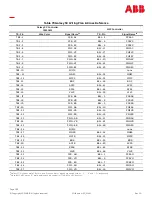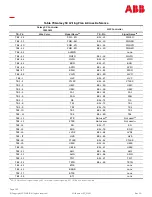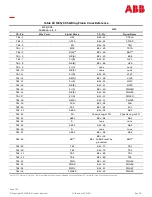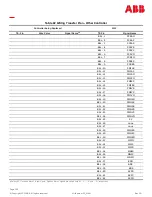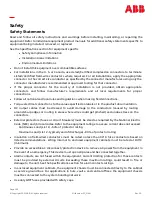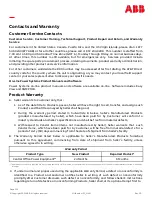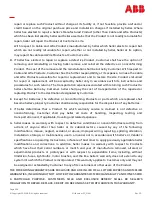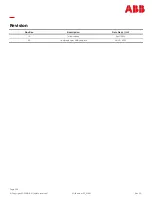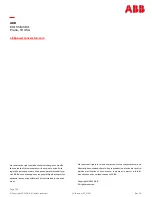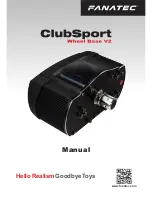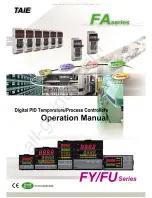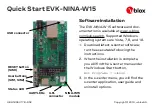
Page 201
© Copyright 2023 ABB. All rights reserved.
Millennium SC_MAN
Rev 2.0
Precautions
Precautions and proper methods for handling related equipment is in their manuals.
The following precautions apply when working on or using this type of equipment:
•
This unit must be installed, serviced, and operated only by skilled and qualified personnel who
have the necessary knowledge and practical experience with electrical equipment and who
understand the hazards that can arise when working on this type of equipment.
•
The equipment could be powered by multiple ac inputs. Ensure that the appropriate circuit
protection device for each ac input being serviced is disconnected before servicing the
equipment. Do not disconnect permanent bonding provisions unless all ac inputs are
disconnected.
•
Batteries may be connected in parallel with the output of the rectifiers. Turning off the
rectifiers will not necessarily remove power from the bus. Make sure the battery power is also
disconnected and/or follow safety procedures while working on any equipment that contains
hazardous energy/voltage.
•
Hazardous energy and voltages are present in the unit and on the interface cables that can
shock or cause serious injury. Follow all safety warnings and practices when servicing this
equipment. When equipped with ringer modules, hazardous voltages will be present on the
ringer output connectors.
•
In addition to proper job training and safety procedures, the following are some basic
precautions that must always be used:
•
Use only properly insulated tools.
•
Remove all metallic objects (key chains, glasses, rings, watches, or other jewelry).
•
Wear safety glasses.
•
Test circuits before touching.
•
Lock out and tag circuit breakers/fuses when possible to prevent accidental turn on.
•
Be aware of potential hazards before servicing equipment.
•
Identify exposed hazardous electrical potentials on connectors, wiring, etc. (note the
condition of these circuits, especially wiring).
•
Use care when removing or replacing covers; avoid contacting circuits.
•
Use a personal ESD strap when accessing or removing electronic components.
•
Electricity produces magnetic fields that can affect implanted medical electronic devices, such
as pacemakers. The strength of the magnetic field depends on the amount of current in the
circuit, as well as other conditions (such as number of conductors, placement, and distance
from the conductor). DC power and distribution systems, including batteries, which are
typically used in telecommunications utility rooms, can operate at high current levels.
Personnel with electronic medical devices need to be aware of their restrictions when working
around electricity.



